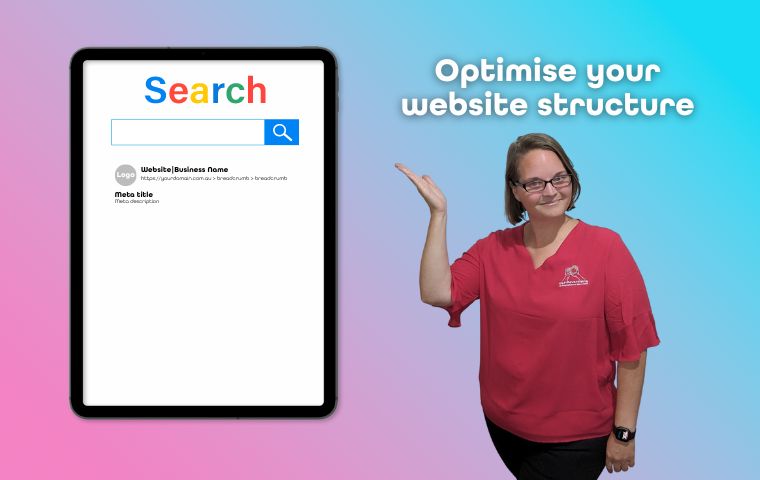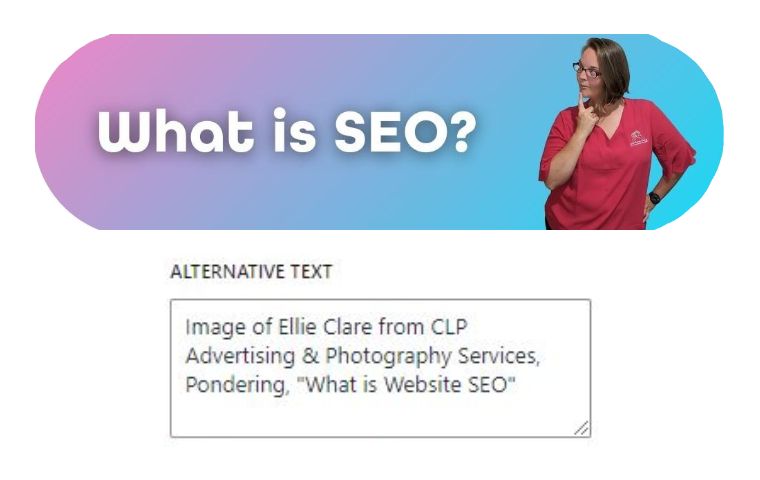Kickstart Your Journey: A Novice’s Guide to Understanding Website SEO
Website SEO, or search engine optimisation, is crucial for ensuring your online presence is visible to potential customers. Whether you write your own SEO website content for your business, have an in-house website designer, or work with CLP Advertising & Photography Services for your digital marketing needs, understanding how to implement effective SEO strategies is vital. This blog explores practical steps and free tools to improve your website’s SEO, particularly focusing on the Australian audience.

What is website SEO?
Website SEO refers to the practice of enhancing your website to increase its visibility in search engine results. This involves various strategies that help search engines understand your content and determine its relevance to user queries. Key elements include keyword optimisation, high-quality content creation, and proper website structure.
Why is SEO important for Australian Businesses?
SEO is not just important – it is essential for Australian businesses! Good SEO vastly improves online visibility, helps attract local customers, and increases revenue over time. A study by Sensis revealed that 87% of Australians use search engines to find local businesses. Implementing effective SEO strategies can help your business stand out in the sea of competing search results, driving more traffic to your site and ultimately increasing sales.
HOT TIP: Does your website require more SEO copy content?
To ensure your website ranks well in search engine results, it’s important to have sufficient content on each page. Forbes recommends that an average of 600-700 words per page is optimal for SEO. Websites with less than 300 words per page are often considered “thin” by Google’s standards and may not rank as highly in search results. We recommend aiming for a minimum of 450 words per page, ideally reaching 600-700 words, to meet SEO best practices and provide comprehensive information to your audience.

Steps to improve your website SEO

1. Conduct keyword research
Start by identifying relevant keywords for your business. Use tools like Neil Patel’s Ubersuggest to find medium to low difficulty keywords with good search volume. For example, target keywords such as “SEO website content writer” or “Australian businesses SEO” may be relevant to your business and help attract relevant traffic. We recommend using SEMRush an all-in-one tool suite for improving online visibility.

2. Optimise your website structure
Organise your site logically by grouping similar topics together and using descriptive URLs. According to Google’s SEO Starter Guide, using structured data can help search engines better understand your site’s content.

3. Create high-quality content
Content remains king in SEO. Ensure your content is unique, engaging, and regularly updated. Google emphasises the importance of creating compelling and useful content to influence your website’s presence in search results. Plus, regularly updated, useful and engaging content helps naturally drive traffic, as customers or clients share business recommendations digitally and in the real world.

4. Use descriptive alt text for images
Adding descriptive alt text to your images helps search engines understand what the images depict and improves your site’s accessibility for those with vision impairments. We recommend incorporating your keyword into your descriptive alt text, like in this example here.

5. Promote your website
Promote your content through social media, community engagement, and word-of-mouth. Effective promotion leads to faster discovery by interested users and search engines.
Read more about how Social Media helps your SEO and learn how to boost Social Media Engagement.

6. Monitor your SEO performance
Use tools like Google Search Console to track your site’s performance. Regularly check your website’s crawlability, indexing status, and address any potential issues.
Services CLP provides for SEO
At CLP, we offer a range of services to enhance your website’s SEO, including:
- SEO content writing: Our expert writers create high-quality, SEO-optimised content tailored to your business needs.
- Website design: We design user-friendly, SEO-optimised websites to improve your online presence.
- Advertising & photography: Our advertising and photography services help create compelling visual content that attracts and engages your audience.
Improving your website’s SEO is essential for increasing visibility and attracting more customers. By following the steps outlined in this guide, you can ensure your website meets the requirements set by Google and ranks higher in search results. If you would like further assistance or would prefer to hand over the hassles of SEO optimisation to CLP completely, we are here to help!
Get a free Website Audit, Competitor Analysis and Online Presence Report to see where your business sits in the market and receive customised actionable steps to help you improve your position.